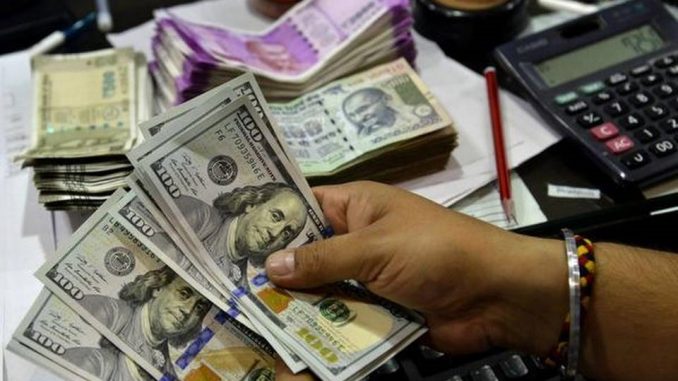
Context:
- The Indian currency touched 72.06 mark on Monday in a series of continued depreciation for past seven weeks. The depreciation stands at over 4% since mid-July.
- Other than the U.S-China trade war and global economic slowdown, the gradual fall in rupee value can be attributed to the massive capital outflow in recent months.
- The withdrawal of enhanced surcharges on foreign portfolio investors by the finance minister is expected to give some relief.
In comparison with other currencies:
- Owing to the U.S-China trade war, the devaluation of yuan by China has triggered this downfall of currencies. The Chinese yuan now stands below 7 per dollar, this low has been last noticed during the 2008 financial crisis.
- The fall in the value of Indian rupee is not a lone phenomenon. The Brazilian real, Mexican peso, Turkish lira and South Africa’s rand have also seen similar fall amid other emerging markets.
Understanding the economics: What is devaluation?
- We typically see the fall in rupee value against the US dollar as a worrying sign for the economy. So how exactly devaluing its currency is going to play in favour of China? To understand this we need to understand the difference between devaluation and depreciation.
- Although both of the phenomena result in the fall in the value of a country’s currency, devaluation is achieved by deliberate attempts by the government tackle trade deficit while depreciation of a currency is decided by the market.
- China is a fixed rate system, that means, the value of the Chinese Yuan is decided by the central bank – People’s Bank of China. In comparison, RBI can not directly devaluate Indian Rupee which makes India as a Floating Rate System.
- In a Floating Rate System fall in the value of a currency is generally explained by the term ‘depreciation’.
So how exactly devaluation influences international trade?
- Devaluation affects the exchange rate of a country’s currency with a foreign currency. Exports get benefitted by devaluation as they get more money for the same amount of goods and services.
- Also in the exported country, the consumers can now buy more imported goods than before at the same price rate.
- Imports, on the other hand, are affected adversely by this process as the price of imported goods and services rise due to the lower value of the home currency against the foreign currency.
- As the exports are boosted and imports are hampered, devaluation plays a major role in handling trade deficit. A country can also devaluate its currency to meet the high import tariffs in the importing country.
- People’s Bank of China recently devalued its daily reference rate below 7 per cent per dollar in a response to the imposition of 10% tariffs on imports by the US government. The U.S President Donald Trump has called China ‘a currency manipulator’.
The impact of trade war on markets:
- The announcement by the finance minister to boost the demand and liquidity for automobile sector and withdrawal of surcharge on FPIs was yet to be celebrated by the investors, the news of China’s imposition of additional tariffs on 75 Billion dollar worth of U.S goods hit the market.
- With an ongoing economic slowdown in the Indian Economy, the U.S-China trade war is further adding to the injury. The markets look toward an obscure future.
The Slowdown in Indian Economy:
- The GDP growth rate for the last quarter was at 5.8 per cent and is expected to go lower for the coming quarter.
- The investment rates have also seen a steady decline as measured by Gross Fixed Capital Formation from over 24 per cent of the GDP in 2011 to a mere 28.8 per cent in 2018.
- The number of dropped investments has been doubled since 2011. The gross domestic savings, as a per cent of GDP, has also declined from 32.7 per cent to 29.3 in the same period.
- Most sectors are in shambles especially the automobile sector.
- The inflation has been declining which although is relieving to the consumers, can discourage the investment in the long term due to low demand.
- The performances of major economic growth indicators is, of course, a very worrying sign for the economy.
Conclusion:
- Although the decline in the value of Indian rupee is not a good signal, it is safe to assume that further downfall can be met with appropriate policies by the Reserve Bank of India which has not intervened yet.
- The announcements by the finance minister also to be reflected and rupee is bound to roll back. However, those measures alone will be incapable to provide any major shift against the backdrop of a global economic slowdown and an overall currency depreciation in major emerging economies.

Leave a Reply
You must be logged in to post a comment.